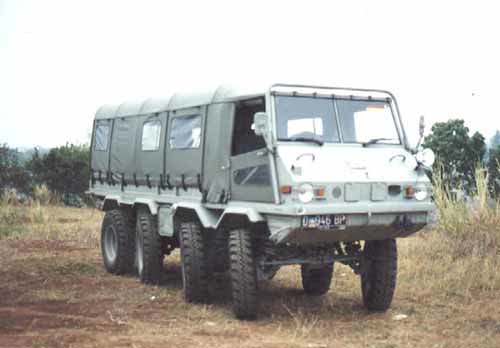I know this is an old thread but it is very relevant to me as I've been researching overland vehicles because I plan on retiring in the next short while and want to Overland full time starting in North America and taking the Pan American highway south, and am looking for a vehicle to do it in. I've considered many different options including a Unimog U1300L, Fuso FG, F450 or F550, Toyota Tacoma or Tundra with a flatbed camper like a Four Wheel Camper. I'm 56 years old and would prefer more living space like what a box cabin offers on the back of a Unimog or F550 if I'm going to be living in it for the next few years.
I read here that the Unimog is very dependable for up to 200,000+ miles but am confused as to why then do 2 of the Unimogs I've looked at had to have serious repairs when they both had only about 60,000 miles? Unimog 1 with 60,000 miles: water pump, new turbo and clutch (I understand clutch are wearable items but my experience with F550's indicate that their clutches should last closer to 100,000 miles minimum, are the Unimog clutches a weak point? Unimog 2, ex fire brigade truck with 53000 miles: also new clutch and water pump, seller has been told that the truck received some sort of "factory rebuild" in 1998 but he's unable to confirm exactly what, you wouldn't think a vehicle with only 50,000 +/- miles would require any sort of rebuild?
On one hand I would prefer a Unimog if they're indeed as reliable as I've been told despite what the 2 Unimogs I've looked at have required, and the parts availability should be much better on a Unimog? But, reading about what sort of major repairs these 2 Unimogs have required has made me nervous.
My Overland vehicle goals are; 1) high reliability and "lowish" maintenance (relatively speaking considering that the vehicle will be subjected to a harsher than normal use), 2) ease of parts availability world wide, 3) carry a 7X13 +/- cabin, at least 600 mile fuel range, 100 gallons of drinking water, capacity and GVWR to haul most necessary tools to do common repairs and maintenance, and haul enough equipment and supplies to live off the grid for min 1-2 weeks. It looks like the F550 would be more comfortable and repaired easier while in North America only, while the Unimog would be less comfortable and slower, but parts availability and necessary mechanics are more common world wide??
I look forward to everyone's comments.






